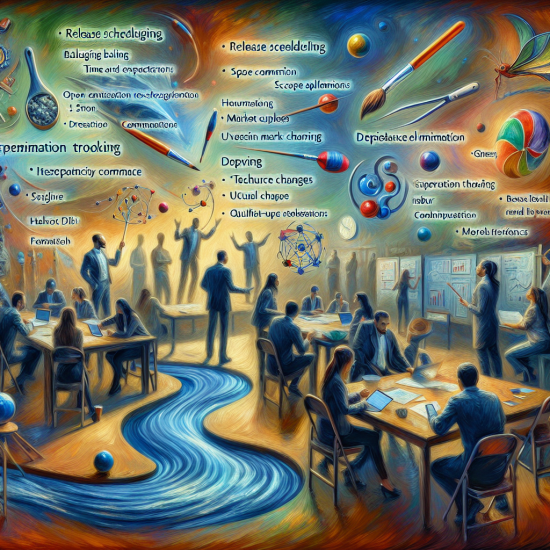Defining a Product Vision in Agile: A Step-by-Step Guide
Creating a product vision statement is like setting the north star for your team and stakeholders. It’s the anchor that keeps everyone aligned, inspired, and moving in the right direction. Here’s a practical, straightforward approach to crafting a compelling product vision statement.
First things first, get to know your product inside out. This means digging deep into its features, benefits, and unique selling points. What core problem does your product solve, or what primary need does it fulfill for customers? What broader impact does it aim to have in the market or society? This foundational understanding is crucial.
Next, zero in on your target audience. Who is your product for? Create detailed user personas to really understand the needs, goals, and pain points of your potential users. Consider how your product fits into their daily lives. The more you know about your audience, the better you can tailor your vision to meet their needs.
The competitive landscape matters too. Research direct and indirect competitors. Identify gaps in the market that your product can fill. Understand what your competitors do well and where they fall short. This analysis will help you position your product more effectively and highlight its unique advantages.
Now, it’s time to define your product’s unique value proposition. What makes your product different and better than existing alternatives? Focus on the benefits and outcomes that users will experience. Make sure your value proposition resonates with your target audience – it’s all about them, after all.
With all these insights in hand, you’re ready to craft your vision statement. Combine everything you’ve learned into a concise, compelling statement. It should be forward-looking, inspiring, and reflect the ultimate impact of your product. Keep the language simple and jargon-free; it’s essential that everyone—team members, stakeholders, and users—can understand and connect with it.
But don’t stop there. Validate your vision statement by sharing it with your team, stakeholders, and potential users. Gather feedback and be open to revisions. This step ensures that your statement accurately reflects the product’s purpose and direction. It should effectively convey the intended message and resonate with everyone involved.
Once validated, communicate your vision clearly and consistently. Integrate it into all aspects of product development and marketing. Use it to guide decision-making and prioritize features that align with the vision. Regularly revisit and reinforce the vision statement with your team and stakeholders to maintain alignment and keep the enthusiasm alive.
Finally, make reviewing and refining the vision statement a regular practice. The market evolves, your product evolves, and so should your vision statement. Periodically check to ensure it remains relevant and inspiring. Be prepared to tweak it based on new insights, shifting goals, or changes in direction. Think of the vision statement as a living document that evolves along with your product’s journey.
In essence, a well-defined product vision statement is a powerful tool in your Agile toolkit. It lays the groundwork for successful product development and stakeholder engagement. By following these steps, you’ll be equipped to create a vision that inspires, aligns, and guides everyone involved towards achieving your product’s ultimate goals.
Key Takeaways:
1. Understand Your Product: Know its features, benefits, and broader impact.
2. Identify Your Target Audience: Create user personas and understand their needs.
3. Analyze the Competitive Landscape: Identify market gaps and competitor strengths and weaknesses.
4. Define Your Unique Value Proposition: Articulate what sets your product apart.
5. Craft Your Vision Statement: Combine insights into a clear, inspiring statement.
6. Validate Your Vision: Seek feedback and be open to revisions.
7. Communicate Your Vision: Integrate and use it to guide development and marketing.
8. Review and Refine: Ensure it evolves with your product and market changes.
By taking these steps, you’ll create a robust vision statement that’s not just a static declaration but a dynamic driver of your product’s success.
#Agile #ProductManagement #VisionStatement #Leadership #TeamAlignment


